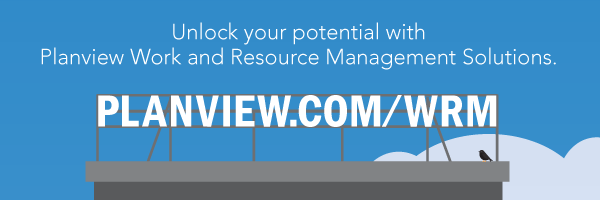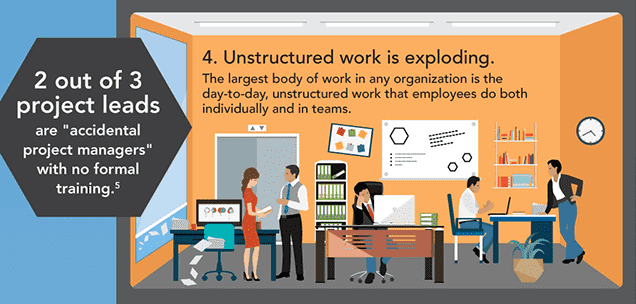
Part 4 of 8 Reasons Your Business Strategy Might Just Fail
While organizations are increasingly using structured, process-oriented methods, the vast majority of work being done in enterprises today is unstructured. This is the day-to-day work that organizations run on, consisting of everything from small tasks to meetings to communications. The question is how to harness all this energy in the best interests of each company.
It’s becoming more difficult, which is why it’s number four on our list of eight forces potentially working against you.
- Outcomes are different
- Capabilities must be strategic
- Work methods are proliferating
- UNSTRUCTURED WORK IS EXPLODING
- Plans are even more critical
- Teams are virtual and global
- Technology is everywhere
- Resources are multiplying
As I said during our customer conference this fall (video below), organizations are trying to help employees do all this unstructured work more efficiently.

Unstructured Work Is Exploding
Why is unstructured work growing so quickly? There are myriad, diverse answers. An article in The Wall Street Journal, citing research from the Labor Department, says that knowledge worker jobs are growing more quickly than ever. In fact, the number of knowledge workers has doubled over the past three decades, and economists expect this trend to continue. While technology is replacing some workers doing routine jobs, it’s also creating new, “nonroutine” ones in different fields. These jobs require more cognitive, creative thinking and a whole lot of unstructured work.
Another clue comes from the results of KPMG’s 2016 CEO Outlook research, which found that:
- More than 80 percent of CEOs surveyed are concerned whether their current products will be relevant to customers in three years.
- Almost half believe their organizations will have transformed into significantly different entities by then.
The rush to innovate and satisfy the ever-changing demands of customers has organizations constantly reinventing themselves. Employees are forced to not only keep up but also to drive change. They are increasingly sharing resources and collaborating across different projects, teams, departments, and geographies. The fact that teams are increasingly virtual and global exacerbates this challenge, which is why it is number six on our list (I’ll cover this in a future post).
If not channeled properly, the result of all this energy could be chaos. This is why it is important to understand how unstructured work impacts the organization, in addition to traditional projects and work methodologies. It is also imperative that employees have a way to work together efficiently.
As I stated in the video, leaders don’t necessarily need all the governance and planning of a PPM system for this type of work, although incorporating it can be extremely valuable for an end-to-end view of who’s doing what, when, and why. On the other hand, having employees do it all in email and PowerPoint is inadequate for effective collaboration and execution.
For these reasons, we acquired ProjectPlace in 2014. As a smart work collaboration tool, ProjectPlace provides unique capabilities to help individuals and teams manage and execute projects. In addition, by integrating ProjectPlace with Planview Enterprise and Troux, we are enabling customers to see these efforts in their portfolios when appropriate.
We introduced Work and Resource Management as a practical way to address how organizations are actually getting work done today. Our solutions help our customers manage all three types of work: unstructured, traditional projects, and structured work methodologies. Using our products, customers can better realize their resource potential.
With all this unstructured work being done in dynamic environments, “Plans are even more critical.” This is number five on our list, and I’ll cover that in my next post. For a wealth of information on this topic – including all eight forces – visit www.Planview.com/wrm.
I’d like to hear from you. How does your organization typically plan and execute on products, services, and applications? Share by leaving a comment below.





